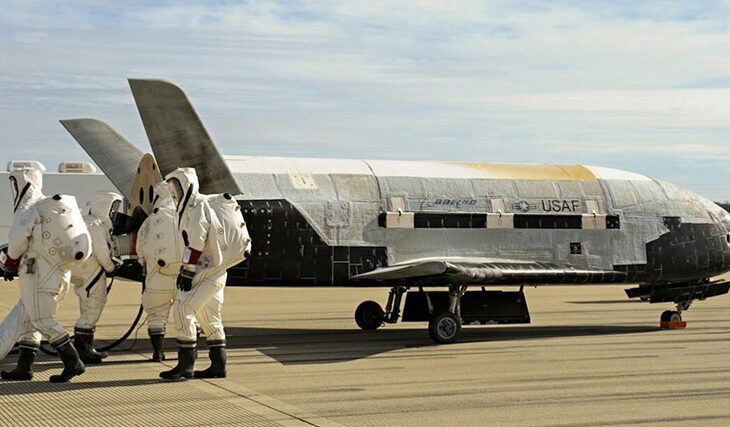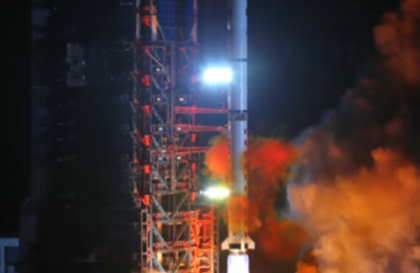The spacecraft and Neil Armstrong are likely part of the X-37B Orbital Test Vehicle program, a reusable spacecraft designed to stay in orbit for long periods. The image of a space plane intercepting an enemy satellite highlights the growing importance of space as an area for military operations and the potential for future space conflicts.
The first official image released by the US Space Force shows a military space plane intercepting an enemy satellite. This image marks a critical moment in the history of space warfare, as it is the first time the public has been given a visual representation of the US military’s capabilities in outer space.
During an Oct. 20 ceremony at Peterson Air Force Base in Colorado, the Space Operations Command (SpOC) unveiled a commissioned painting by artist Rick Herter titled “High Interception.” SpOC is responsible for the intelligence and combat capabilities of the US Space Force in orbit, and this painting is the first official artwork commissioned by the organization.
The image shows a delta-shaped spaceship called a “futuristic interceptor ship.” He is shown opening the payload bay door during a maneuver to counter an enemy satellite on a trajectory to target a friendly spacecraft. This space plane is similar to historical military space planes such as the X-20 Dyna-Soar, as well as the modern X-37B, which remains shrouded in mystery. The Space Operations Command (SPoC) of the Space Force emphasized that the spacecraft shown in the image is a fictional creation.
Artist’s impression of the X-20 during re-entry. Credit: Wikipedia (public source).
According to a recent Space Force statement, SpOC historian Christopher Rumley explained that Herter was told to rely on his imagination and historic space planes because of the high level of secrecy surrounding many space operations.
According to artist Herter, creating a traditional space plane presented its own set of obstacles. He explained that the process was complicated due to his lack of reference material. Herter said in a statement that the most challenging projects are those where the client provides a general idea of what they want but does not include specific details. To ensure the accuracy of the painting in terms of the angles and proportions of the car, Herter built a rough model of the design of his space plane. This became a reference point that he could use while creating the work.
The US Space Force recently created units with the sole purpose of targeting enemy satellites. However, the extent of their capabilities in orbital combat is unknown to the public due to the strict secrecy of most US military space assets.
The space force uses the X-37B experimental space plane to launch stealthy payloads into orbit for testing. After landing on Earth, the payloads are retrieved and examined. Despite this knowledge, most other information about the X-37B remains undisclosed.
Boeing X-37B looks like the Space Shuttle. Credit: Boeing.
In the late 1950s, Boeing produced the X-20 Dyna-Soar as a reusable spacecraft and platform for anti-satellite operations, which was later used as a model for the “High Ground Intercept.” The X-20 was also proposed as a high-speed, high-altitude bomb delivery system.
Armstrong tested the experimental rocket-powered X-15 plane before becoming an astronaut. Credit: NASA.
Before becoming the first man to walk on the moon, Neil Armstrong was discreetly selected for the Dyna-Soar test program, which was unfortunately terminated before the first flight. Despite this setback, Armstrong’s influence lives on, as his contributions inspired NASA to design the space shuttle.
Banner image: A recovery team meets the Orbital Test Vehicle at Vandenberg Air Force Base. Credit: Boeing
Image credit:
https://www.ainonline.com
https://en.wikipedia.org
https://www.bbc.com

